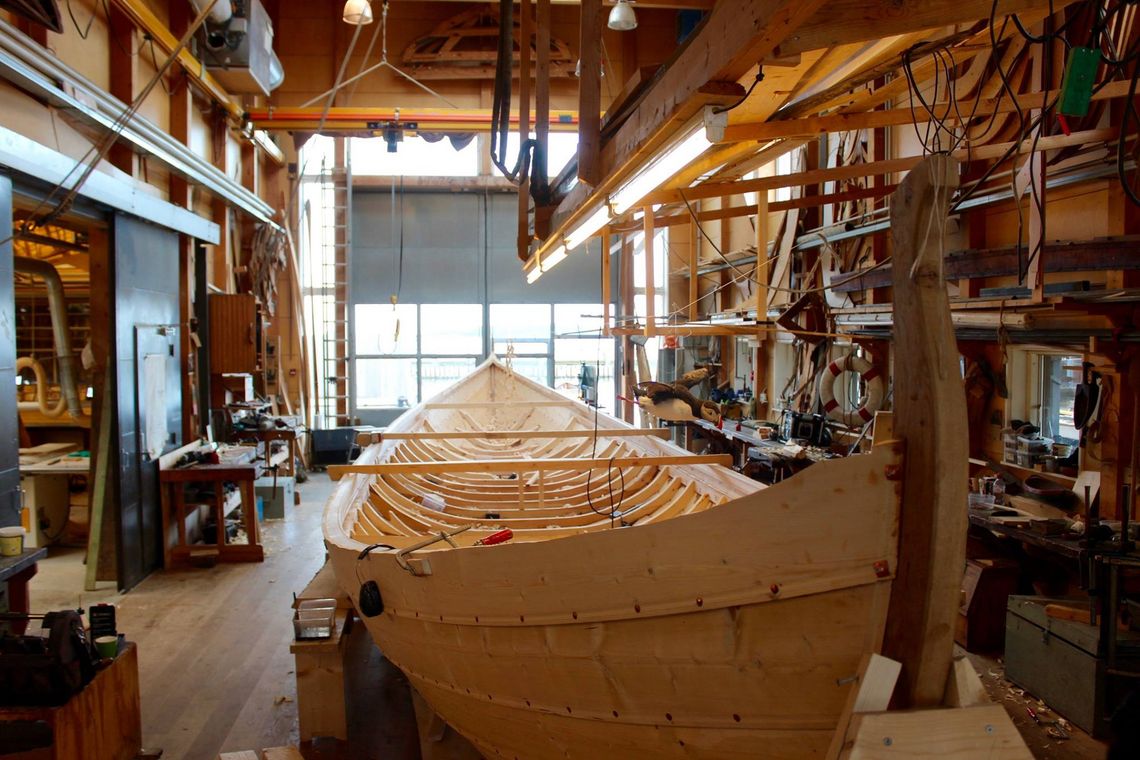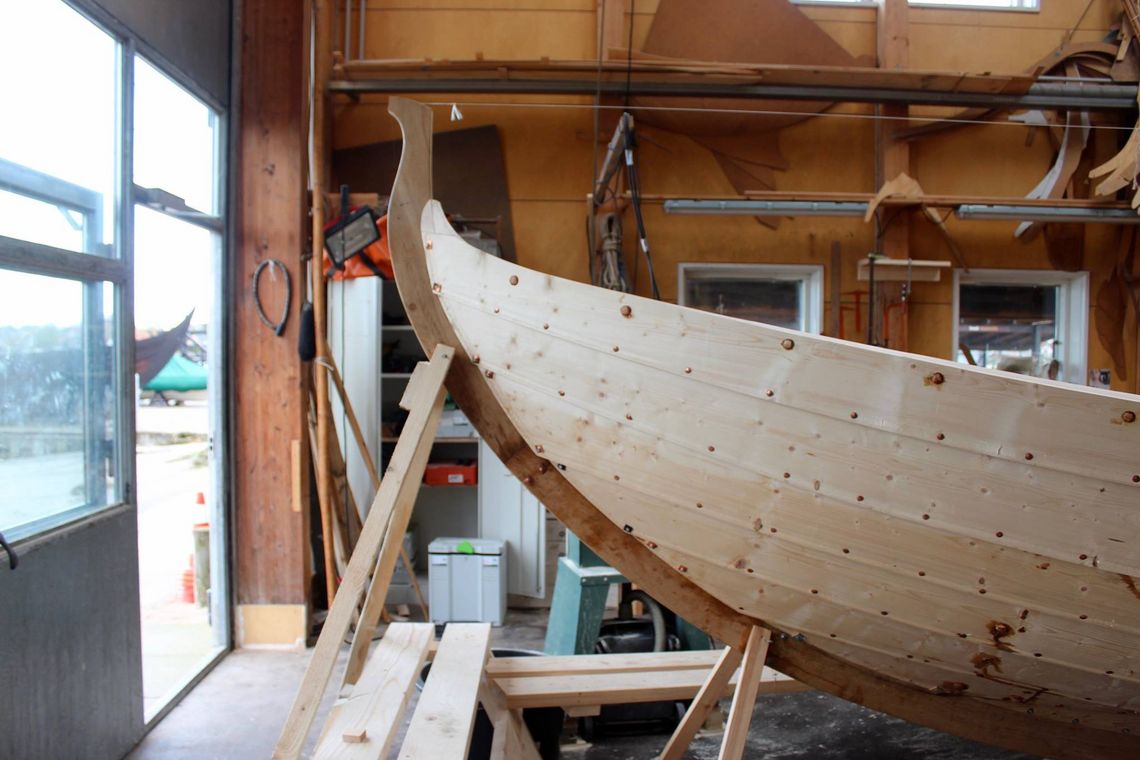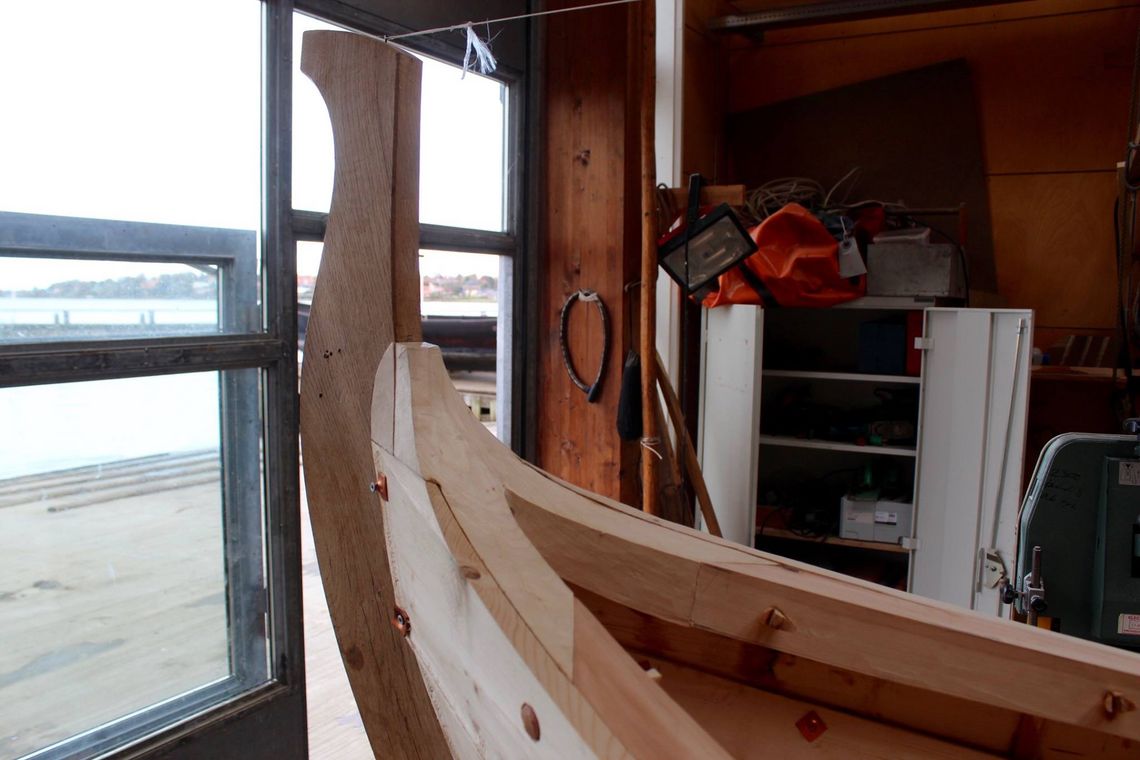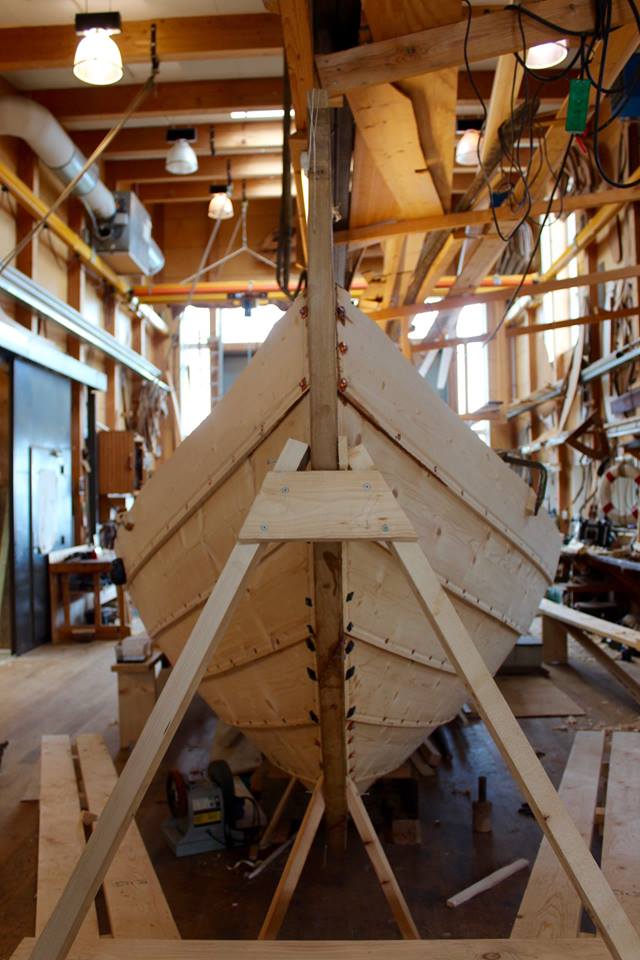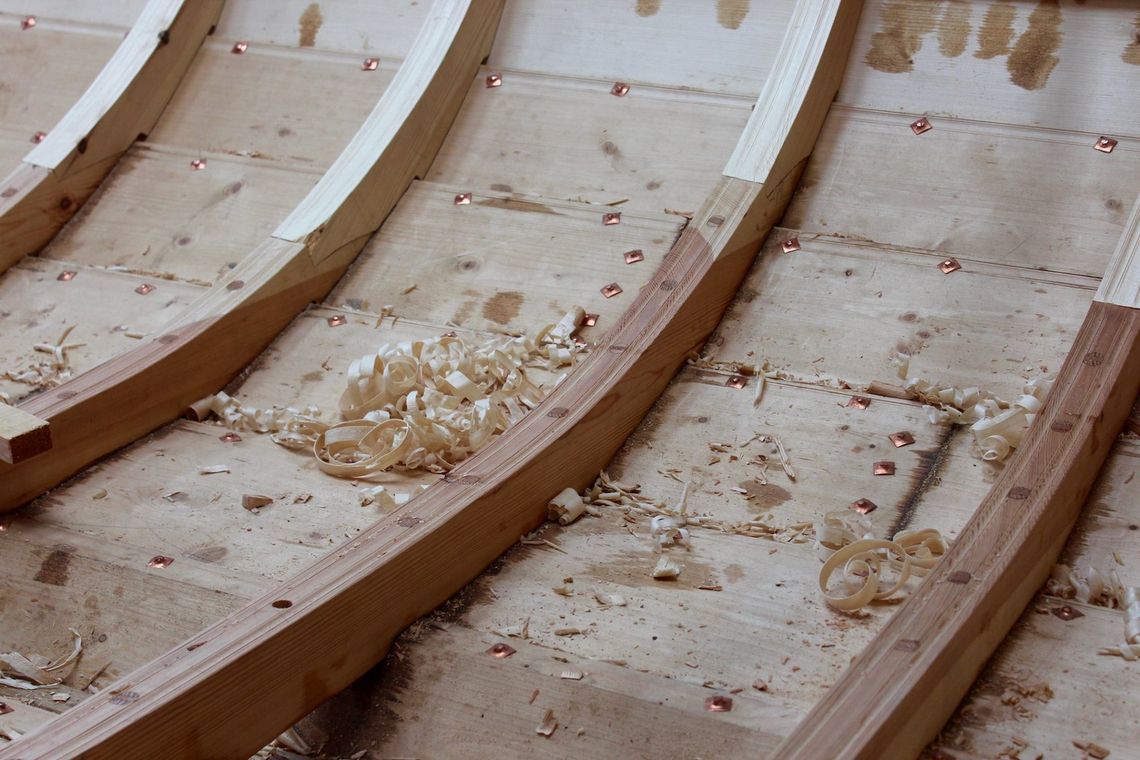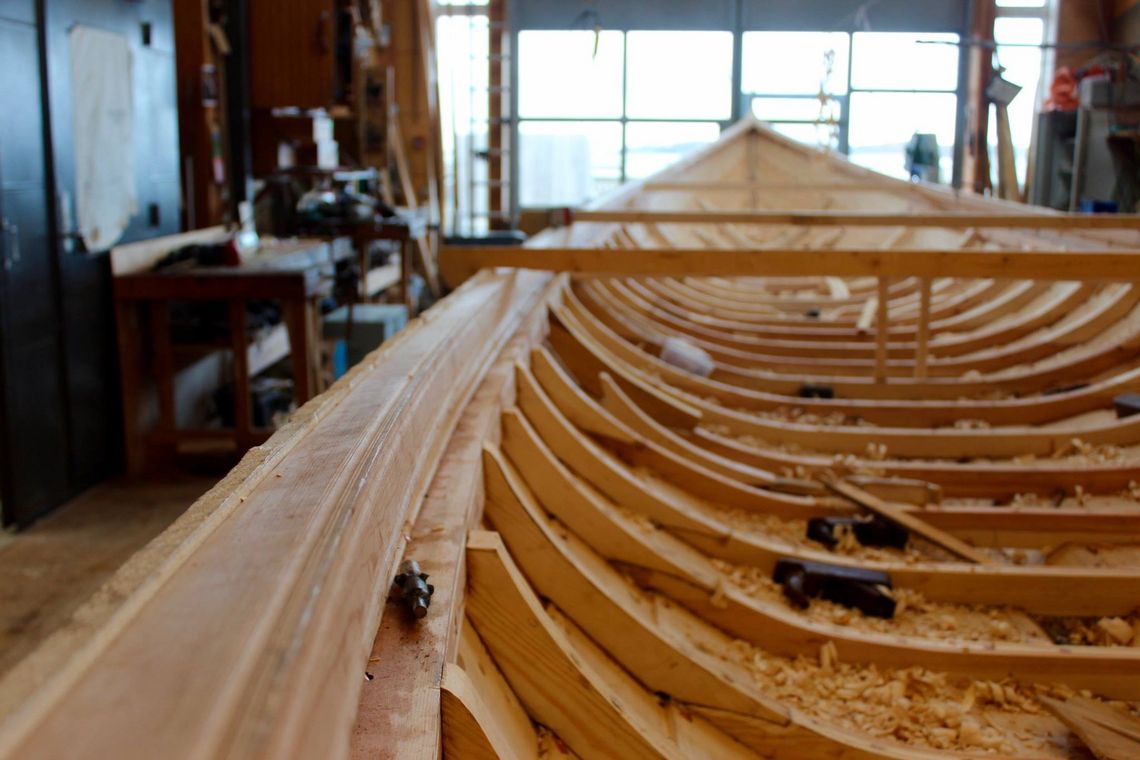
Two new Faroe Boats
The Viking Ship Museum's boatyard are building two large Faroe Boats with 10 oars on each side - in Faroese 'teinæringur' - to be used for sailing with the museum's guests.The boats accommodate 20 guests each as well as two sailing instructors.
The two boats are being built right after each other - the first boat was completed in January 2018, and the second boat will be completed by the end of 2018.
The teinæring from Mykines
The two new boats are being reconstructed after a fabled boat from the little western island, Mykines: It is said that there was once an especially large boat – a teinæringur, native to Mykines, the westernmost of the Faroe Islands. In the middle of the 17th century, a farmer by the name of Benjamin Guttesen may have owned such a boat. They say he had attached ‘bells’ to the thole pins, so that they rang when rowing. When the men from Mykines came rowing into a harbour, the ringing was so loud that people said "...here come the Mykines men".
The Viking Ship Museum's Faroese boatbuilder Hanus Jensen once repaired a boat for a man whose grandmother could remember the sound from the bells.
Perhaps there is something special about the Mykines boats. Hanus' master told a story about an especially fine boat, where roots were used for frames and the planks below the waterline were so special that they were imported from Norway.
A boatbuilder from the Faroe Islands
Hanus Jensen is a traditional boatbuilder from the Faroe Islands: one of just a handful of Scandinavian boatbuilders, who can still build a boat without using a drawing. ‘Just’ with the aid of a few measurements, a wealth of experience that has been handed-down and knowledge of the waters the boat is built to sail in. The boatbuilder becomes both designer and constructor within the tradition he is now a part of.Just as in the Viking Age. ‘Modern’ wooden boat builders build after drawings, which have been drawn by a ship-designer.
Boatbuilding
We don’t know how the Faroe Islanders built boats in the 17th century. Therefore, the question of how a teinæringur may have appeared is something of a guess. Many think, perhaps, that Faroese boats haven’t changed since the Viking Age and up until motors began to make their appearance at the start of the 20th century. However, 17th century boats didn’t look like the boats of today. Plank widths were broader in the 17th century than they are now.
A modern teinæringur must be built with broad boards. This is the only way in which we can recreate a boat form that could represent a boat form from the 17th century.
The old Faroe boats that have survived have some particular traits: the stems, garboards and hood end system can been said to be peculiar to the Faroe boat and have arisen as a result of a lack of access to the best materials. These traits may have emerged early in the boat’s development and must therefore also be included in a modern teinæring.
The knees and some of the floor timbers are made from crooked timber and fastened to the hull using hand-carved, octagonal treenails. The planks are planed by hand to avoid traces of machines and modern technology. The rivets and roves are of copper rather than iron, as was used in times past.
